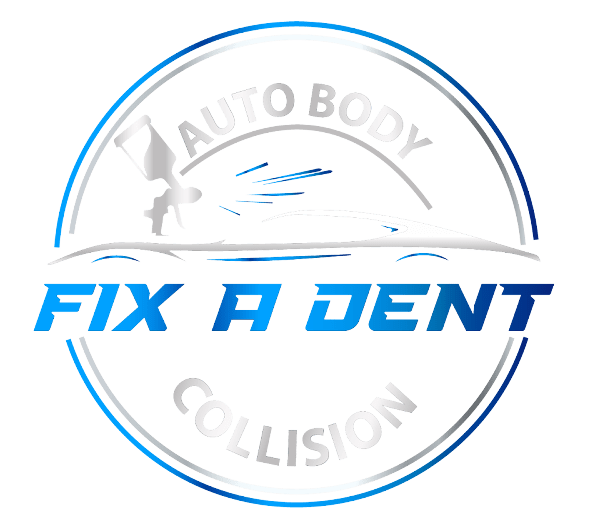Accidents happen, dents appear out of nowhere, and sometimes your car simply loses its shine. That’s where auto body shop repair comes into play. These specialized shops don’t just fix dents—they bring vehicles back to life. Whether it’s a minor scratch or major collision damage, auto body repair ensures your car looks and performs like new.
What is an Auto Body Shop?
Difference between Auto Body and Auto Repair Shops
Many people mix up auto body shops with auto repair garages. Auto repair shops focus on mechanical issues—engines, brakes, transmissions—while auto body shops specialize in the vehicle’s exterior, frame, and aesthetics.
Why People Confuse the Two
Both deal with cars, but the difference lies in function: one keeps your car running, the other keeps it looking good and safe after damage.
Common Reasons for Visiting an Auto Body Shop
- Collision Damage – From fender benders to major crashes.
- Paint Scratches and Dents – Everyday mishaps from parking lots or road debris.
- Frame Damage – Structural integrity is critical after accidents.
- Weather-Related Damage – Hail, storms, and rust are common culprits.
Types of Auto Body Repairs
Dent Removal Services
Paintless dent repair (PDR) is the go-to for small dents without affecting paint.
Paint Restoration and Color Matching
Shops use computer technology to blend colors perfectly.
Frame Straightening
A bent frame can affect driving safety—specialized machines realign it.
Glass and Windshield Replacement
Chips and cracks can spread; replacement ensures safety.
Bumper and Panel Repairs
From scratches to complete replacement.
Rust Repair and Prevention
Especially important in humid or snowy regions where salt causes corrosion.
Step-by-Step Auto Body Repair Process
- Inspection and Damage Assessment
Technicians evaluate visible and hidden damage. - Estimation and Cost Discussion
A detailed breakdown is shared with the customer. - Disassembly and Preparation
Damaged areas are stripped for repair. - Structural Repairs
Frames, panels, and safety elements are restored. - Painting and Refinishing
The car gets primer, paint, and clear coat for a seamless look. - Final Assembly and Detailing
All parts are reinstalled and polished. - Quality Check and Delivery
Shops ensure safety, performance, and aesthetics before handing it back.
Advanced Technology in Auto Body Shops
- Computerized Frame Measuring Systems – Pinpoint accuracy.
- Paint Booth Technology – Dust-free, climate-controlled environments.
- Laser-Guided Dent Removal – Precise and efficient.
- Eco-Friendly Paint Solutions – Safer for the planet and your health.
Benefits of Choosing a Professional Auto Body Shop
- Safety Assurance – Proper repairs mean safe driving.
- Long-Term Value of Your Vehicle – Resale value remains intact.
- Warranty and Guarantees – Peace of mind after service.
- Insurance Collaboration – Saves time and money when filing claims.
DIY vs. Professional Auto Body Repair
- When DIY Works – Tiny scratches or very small dents.
- Risks of DIY Repairs – Poor results, safety issues, and costly mistakes.
- Why Professional Repairs Last Longer – Experts have the tools, skills, and guarantees.
How to Choose the Right Auto Body Shop
- Check certifications (I-CAR, ASE).
- Read customer reviews online.
- Compare quotes—but don’t just pick the cheapest.
- Ask about warranties and insurance handling.
Cost of Auto Body Shop Repairs
- Dent Repair – $50–$500 depending on size.
- Paint Jobs – $500–$5,000 depending on quality.
- Frame Repairs – $600–$10,000 for severe damage.
Factors Affecting Price: car model, severity of damage, paint quality, and labor costs.
Dealing with Insurance for Auto Body Repairs
- File a claim immediately.
- Some insurers recommend shops, but you have the right to choose your own.
- Understand deductibles and what’s covered before committing.
Preventative Measures to Reduce Auto Body Damage
- Park away from high-traffic areas.
- Use a car cover if parking outside.
- Wash and wax regularly to protect paint.
- Drive defensively to minimize accident risks.
The Future of Auto Body Repair Industry
- Electric Vehicles (EVs) require specialized repair methods.
- AI & Robotics will make damage detection faster.
- Sustainable Materials like eco-friendly paint and recyclable parts are on the rise.
Myths About Auto Body Shops
- “Insurance Chooses the Shop” – False, it’s always your decision.
- “All Shops Are the Same” – Quality varies significantly.
- “DIY Saves More Money” – Often ends up costing more in the long run.
Conclusion
Auto body shop repair is more than fixing dents—it’s about safety, value, and peace of mind. Whether you’re dealing with a small scratch or a full collision repair, choosing a professional shop ensures your car gets the treatment it deserves. With modern technology, skilled technicians, and insurance collaboration, your vehicle can be restored to its original beauty and performance.
FAQs
Q1. How long does auto body repair take?
It depends on the damage—minor repairs take a few hours, while major collision repairs may take weeks.
Q2. Is paintless dent repair permanent?
Yes, if done correctly, PDR restores the panel permanently without damaging the paint.
Q3. Does insurance cover all types of auto body damage?
Not always—it depends on your policy. Comprehensive and collision coverage usually apply.
Q4. Can I choose any shop for insurance claims?
Yes, the law allows you to pick your preferred repair shop, even if the insurer suggests one.
Q5. How can I maintain my car’s paint job after repairs?
Regular washing, waxing, and avoiding harsh chemicals will keep the paint shining.
